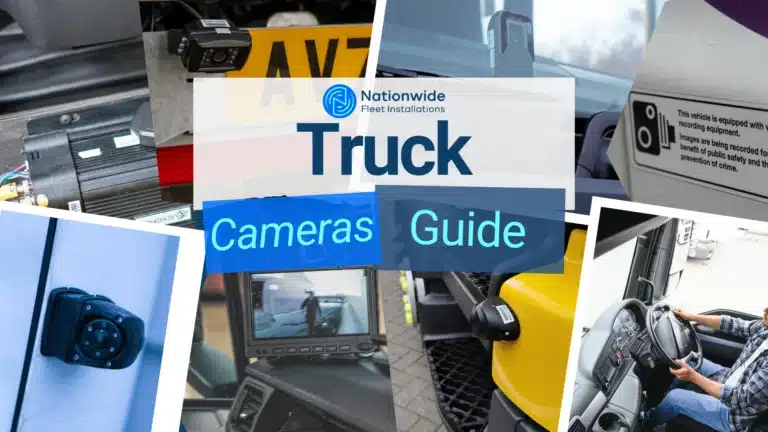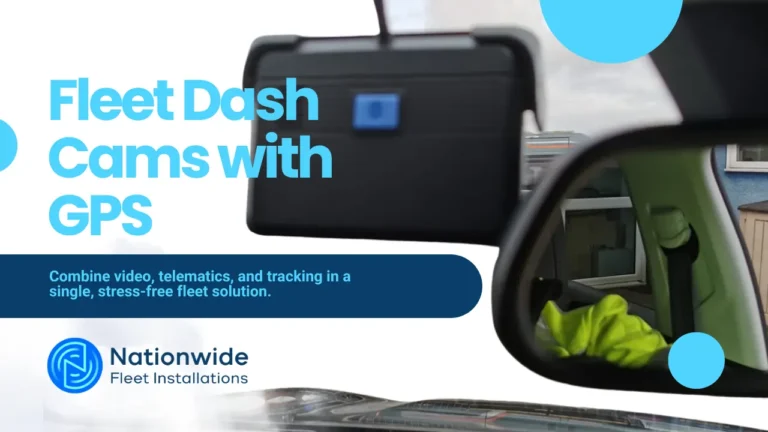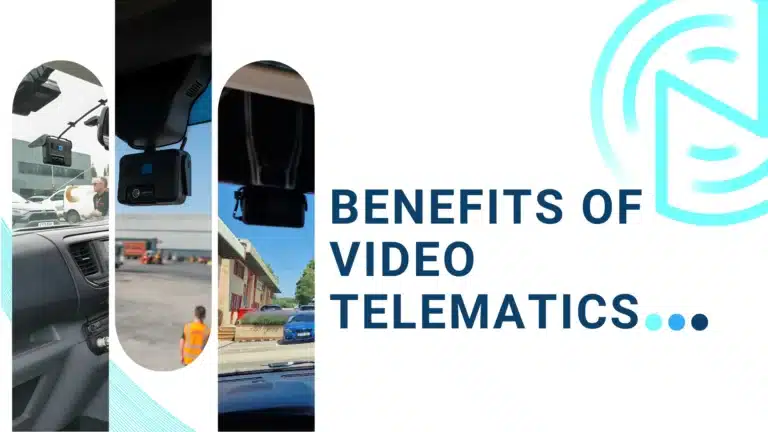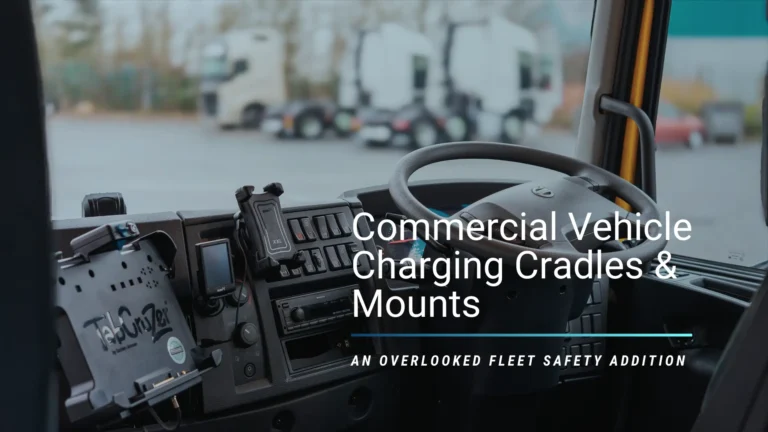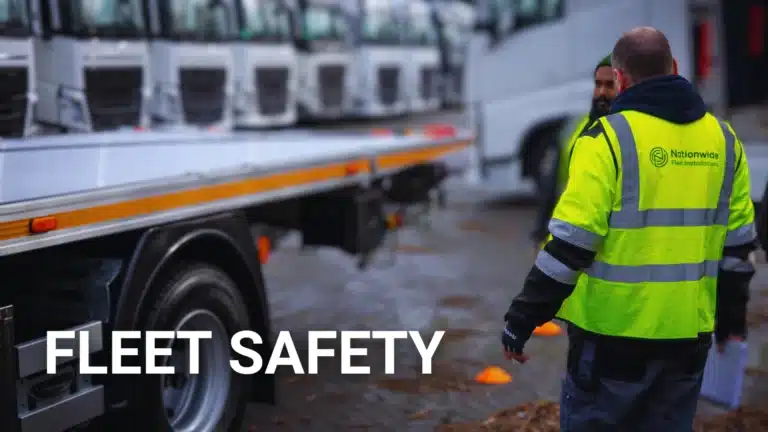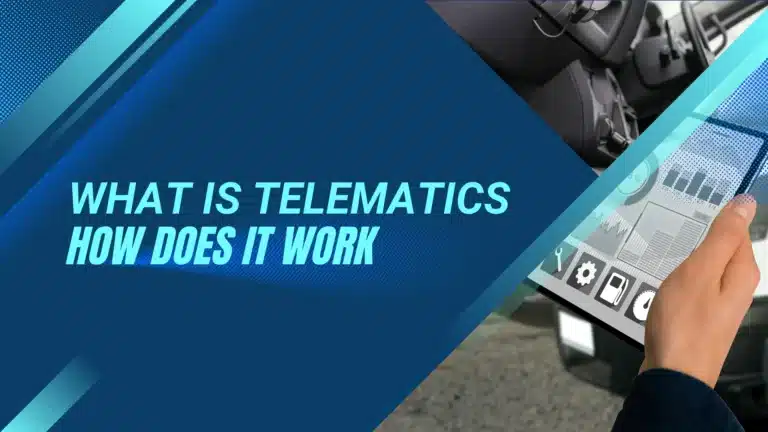Self Install Telematics vs Professional Installation
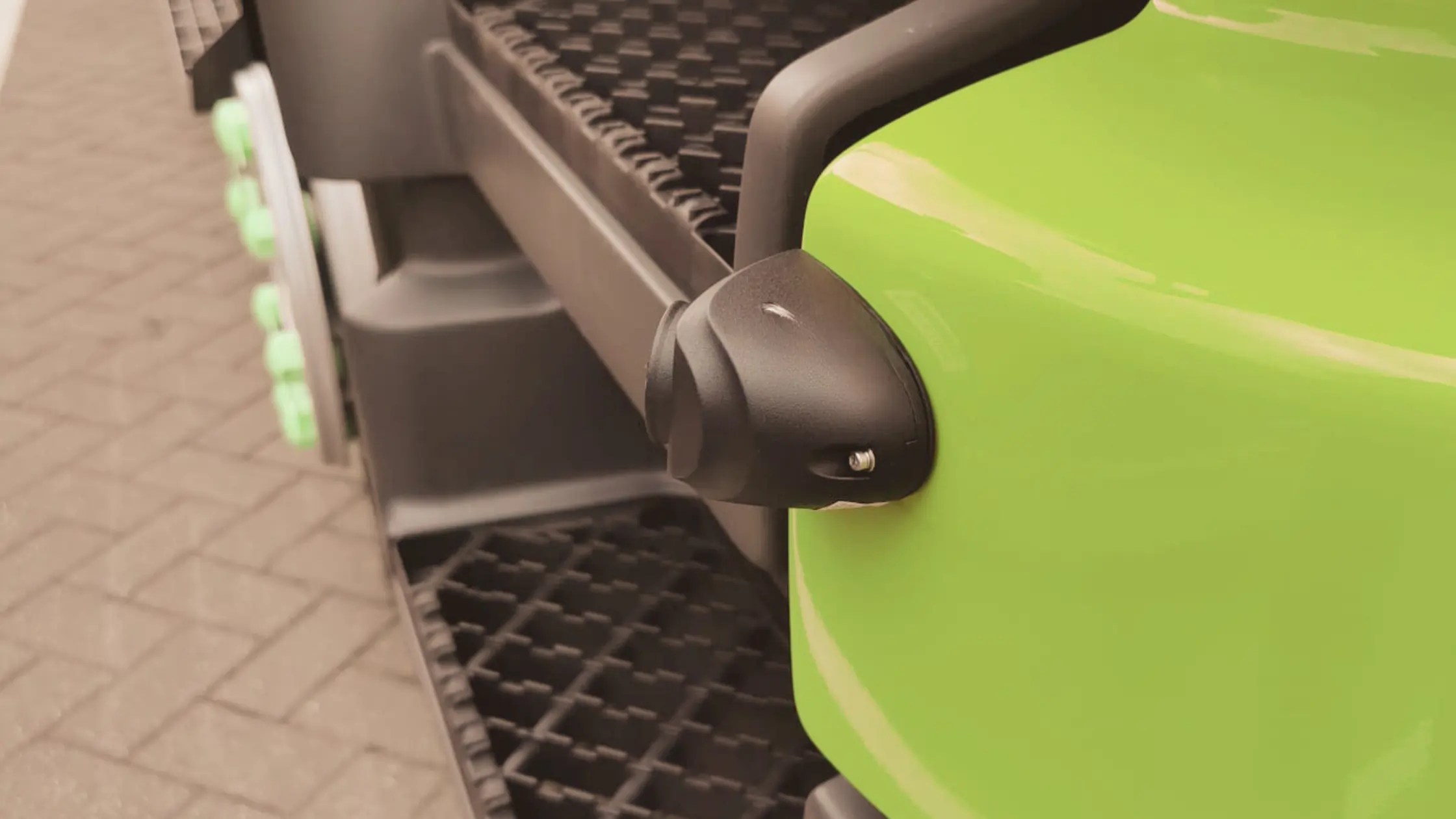
Telematics has reshaped the way we monitor and manage vehicles and assets. Combining telecommunications and informatics, it utilises GPS, onboard diagnostics (OBD), vehicle sensors, and other devices to send, receive, and store information related to vehicles and their operation.
As more fleets adopt telematics technology, at Nationwide Fleet Installations, we often encounter customers debating whether to opt for self-installation or professional installation of their telematics systems.
TL; DR:
While our expertise lies in professional telematics installations, our primary goal is to provide you with comprehensive information on telematics integrations, as we know that for many fleet operators, this is a significant investment. We want to ensure you’re well-informed from the outset, helping you avoid costly mistakes and delays that could derail your telematics project mid-implementation.
The Big Debate
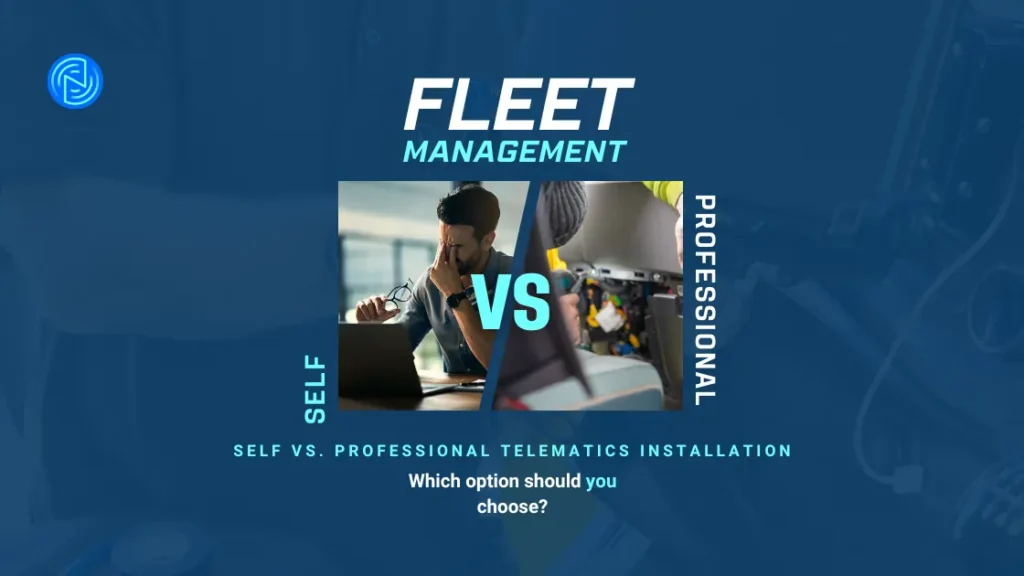
|
Professional Installation |
Self Installation | |
|---|---|---|
|
Pros |
|
|
|
Cons |
|
|
pros vs cons table comparing self-installation and professional installation of telematics systems:
Why Is This Topic Important?
Impact on Telematics Adoption and ROI
The installation phase is critical for telematics adoption among drivers and maximising your return on investment (ROI). Delays or issues during installation can have significant consequences:
- For Telematics Suppliers: Delayed customer onboarding postpones revenue generation and opportunities for account management and cross-selling. It can also harm your brand reputation.
- For Fleet Managers and Operators: Installation delays can defer the ROI of your telematics project and disrupt daily operations, leading to inefficiencies and increased costs.
Understanding the pros and cons of self-installation versus professional installation is essential to make an informed decision that aligns with your business objectives.
what is self install telematics?
Self-installation telematics, also known as self-fit or plug-and-play telematics, refers to both the process of installing telematics yourself, using in-house resources and not outsourcing the service. With the rapid innovation and development in telematics, “self-install telematics” now also refers to the devices specifically designed for easy, non-professional installation. This approach plays out differently depending on your role:
- Fleet Operators – You invest in a telematics solution, and the supplier offers a self-install option or provides self-install telematics devices (plug-and-play), allowing you to install the technology internally.
- Telematics Suppliers – You provide customers with devices and solutions that can be readily plugged into their vehicles without professional/expert installation.
Self-install devices are marketed as “easy to install” solutions, typically designed to be fitted onto a vehicle’s dashboard, windscreen, or power source. These are intended for quick setup without professional assistance. However, while they are promoted as easy fit-and-forget solutions, installation challenges can still arise, such as compatibility issues, incorrect placement affecting performance, or difficulties with secure mounting. In some cases, professional support may still be needed.
Find out more about telematics
Benefits of Self-Installation
Cost-Effective and Quick Deployment for Simple installs
Self-installation can be initially cheaper and time saving, especially for devices with less complex installation requirements. Plug-and-play solutions are designed for quick deployment, making them suitable for basic products and straightforward setups.
They are also ideal for solutions that need to be swapped from driver to driver or vehicle to vehicle – making this a straightforward swap.
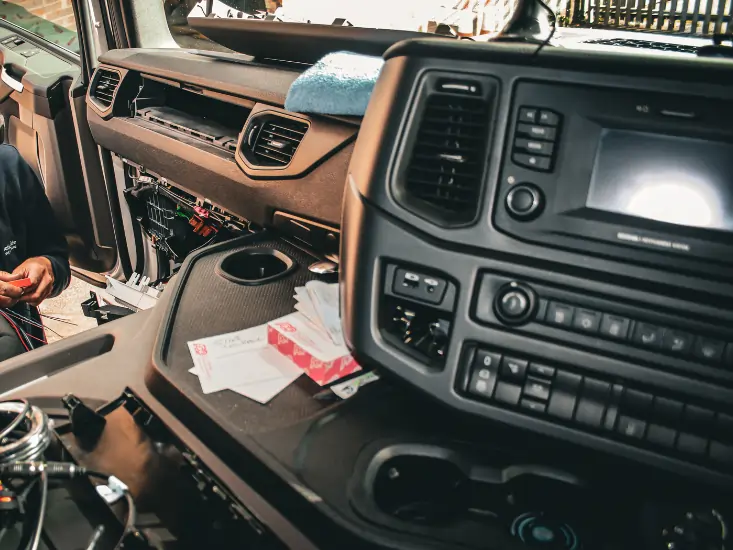
Potential for Reduced Vehicle Downtime
In theory, self-installation should minimise vehicle downtime since installations can be scheduled flexibly around your operations. Less time spent on installation means vehicles can remain active, reducing operational disruptions. Customers can start experiencing the benefits and ROI of their telematics investment straight away.
Installation guides
Most telematics providers supply detailed installation guides that walk you through every step of setting up the system. These instructions can be incredibly helpful, especially if you’re working with a technology, you’ve never installed before. By following the guide closely, a self-install job can become much more manageable.
At Nationwide Fleet Installations, we deliberately phrase it as “self-installation can be” rather than speaking in absolutes like “self-installation is,” because, after over 30 years of carrying out professional installations, we have witnessed first-hand that even the simplest self-install projects can go wrong. This is not always the case, of course, and we will explore those exceptions later.
Drawbacks of Self-Installation
Risk of Poor Quality and Dangerous Installations
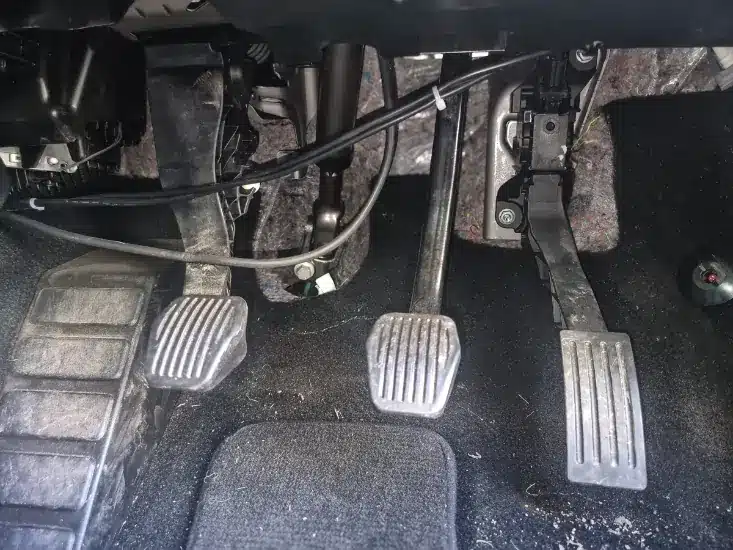
We’ve witnessed instances where non-professional installations were substandard or even hazardous. Those in the fleet industry will have seen some pictures from professional networks like LinkedIn showing the extent of the problem. This isn’t necessarily the fault of the individuals, drivers or staff tasked to carry out the installs but often results from a lack of training, quality control and expertise. Poor installations can compromise vehicle safety and lead to costly rectifications.
Inconsistency Across Fleet Vehicles
Achieving uniformity and professionalism across multiple vehicles is challenging without professional installers who have the expertise and know their way around a vehicle’s trim and electrical systems. Variations in installation quality can affect the durability of your vehicles as well as potentially the performance and reliability of your telematics system.
Potential Delays and Non-Completion
Relying on drivers or untrained staff to perform installations may result in delays or incomplete installations. Communication issues, lack of technical ability, and competing job responsibilities can hinder the timely execution of the installation process.
Increased Compliance and Legal Risks
Incorrect installations can lead to compliance issues, such as dash cams obstructing the driver’s field of view, PDAs & mounts not properly secured or in-operational DVS safe system equipment which can result in fines and legal liabilities. Ensuring installations meet regulatory standards can sometimes require specialised knowledge and expertise.
Ease of Tampering and Device Disconnection
Self-install solutions can sometimes be visible with wiring easily exposed, leading to devices that are easily tampered with, improperly secured, or even loosely connected. This not only makes them vulnerable to accidental disconnections due to vibration or movement during day to day use but also compromises the discrete placement of critical telematics devices, such as hidden trackers intended to aid vehicle recovery in the event of theft. If the device’s location is obvious and easily accessible, thieves or unauthorised individuals can remove or disable it, severely diminishing its effectiveness.
Additionally, when drivers or non-specialist staff handle the installation themselves, they gain intimate knowledge of where and how the equipment is mounted. This insight can make it much simpler for them—or anyone else—to disconnect or tamper with the device.
A common mishap
Consider a scenario we’ve encountered more often than you might expect: a fleet invests in technology like dash cams to ensure that all incidents are captured, providing valuable evidence in the event of collisions or disputes.
Unfortunately, if one of these cameras fell loose, got broken or disconnected weeks before by a subcontractor or driver, you may not realise until it’s too late. When a critical incident occurs and you turn to retrieve the footage, you find nothing but a dead feed—no evidence, no protection, and effectively no return on your investment. This kind of oversight can be especially frustrating and costly. The resources you relied upon for driver accountability, insurance claims, and liability reduction are suddenly useless.
Without professional installation to ensure secure, concealed mounting and effective maintenance, that dash cam can’t fulfil its purpose—and the consequences can be felt across operations, insurance settlements, and ultimately your bottom line.
Calibration and Testing Challenges
Telematics devices and systems often require calibration and testing to function correctly. Without professional installation, these crucial steps may be overlooked, leading to inaccurate data recording and analysis.
Logistical Issues with Large Fleets
For larger fleets, the option of self-installation may prove to be impractical and potentially disruptive. The coordination of installations across a significant number of vehicles can lead to increased downtime, consume valuable operational time of employees, disrupt ongoing operations, and give rise to additional expenses, such as fuel costs incurred while travelling to depots and following up if installs have been completed.
For instance, in the case of a fleet consisting of over 200 vehicles with a limited in-house team of merely five installers based in a single location, it is likely that all vehicles would need to be transported to the workshop or that the installers would have to undertake extensive travel, both of which are inefficient uses of time and resources.
What is Professional Telematics Installation?
Professional telematics installation is carried out by qualified experts. They usually have job roles such as telematics technicians, auto electricians, or automotive engineers, working for specialised installation companies, manufacturers, or in-house teams. Find out more about what telematics installers do.
This approach leverages expert knowledge to ensure that every installation is performed correctly, efficiently, and safely, while also adhering to relevant industry regulations and technical specifications.
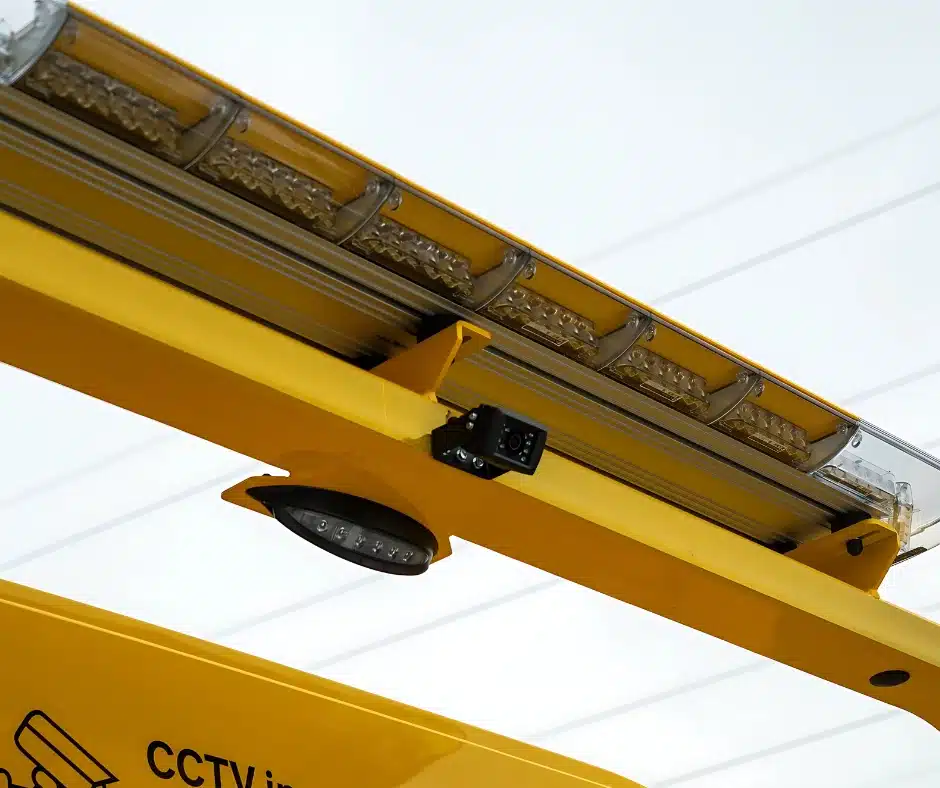
Benefits of Professional Installation
Expert Project Management and Accountability
With professional installations, you are in control. By entrusting your telematics rollout to professionals, you hand over responsibility to experts who can manage the project efficiently and effectively. They minimise vehicle downtime, provide clear timelines, and take accountability for implementation. This avoids delays common with self-installation due to untrained staff or uncommunicated installation issues.
Whole-Life Vehicle Management Support
It’s important to remember that installation isn’t a one-time event. Over the lifespan of your vehicles, regular maintenance and unforeseen circumstances may require components to be adjusted, removed, or recalibrated. For example, replacing a windscreen with integrated sensors or cameras can mean temporarily uninstalling and then accurately realigning the telematics equipment.
By partnering with a professional installer, you ensure that any necessary maintenance work—be it after damage, routine servicing, or upgrades—can be carried out smoothly, with your equipment restored to full functionality as quickly as possible. This long-term support provides peace of mind and ensures that the technology continues to deliver value throughout the vehicle’s entire life cycle.
A professional installer usually offers a suite of fleet management services to support you throughout the lifetime of your fleet vehicles. They maintain accurate documentation and logs of your vehicles, tracking the devices, technology, and systems installed, which is useful for troubleshooting, servicing, and repairs.
Permanent and Neat Installations Resistant to Tampering
Professional installations are typically hardwired, making them more permanent and less prone to tampering or removal. Installers ensure that devices are integrated seamlessly, with no dangling wires or rattling components, maintaining the vehicle’s original appearance and promoting a professional fleet image.
Handling Complex Installations with Expertise
Professional telematics installers are trained to handle complex installations, including:
- Varied Vehicle Configurations: Differences between right-hand and left-hand drive vehicles.
- Diverse Power Systems: Special considerations for hybrid, petrol, and electric vehicles.
- Safety Protocols: Specific procedures for installing driver ID systems and immobilisers.
Their expertise ensures installations are completed safely and correctly, regardless of complexity.
Telematics Technology Transfer
Professional installation services also excel when it comes to transferring telematics technology between vehicles. As your fleet changes, whether you’re upgrading to newer models, going through fleet electrification or decommissioning older ones. It makes little financial sense to discard perfectly good telematics hardware. While self-installation might seem straightforward for swapping devices, professional installers can also handle equipment removal and transfers, especially hardwired equipment.
They can carefully remove the technology from the old vehicle, ensure it remains in perfect working order, and then reinstall it in a new vehicle. In fact, at Nationwide Fleet Installations, we can even store your telematics equipment if there’s a delay, such as waiting for a new vehicle delivery, ensuring that when you’re ready to install it again, everything is on hand and ready to go. This flexibility not only safeguards your investment but also the transition process, minimising downtime and maintaining continuity in your fleet’s operations.
Trial install
A trial installation, sometimes referred to as a pilot deployment, is a small-scale test run of a telematics system before rolling it out across an entire fleet. Instead of fitting to the whole fleet or even hundreds of vehicles at once, a trial involves installing the technology on a single vehicle or a limited selection of units to assess every aspect of the solution in a real-world context.
This process not only evaluates the technology’s technical performance but also examines practical considerations like installation time, vehicle type, cabling requirements, hardware placement, and calibration needs.
For fleet operators, a trial is an invaluable opportunity to understand how the installation process will play out on a larger scale, preview the final aesthetics of the installed equipment, and confirm that the telematics system truly enhances day-to-day operations. On the other hand, telematics providers benefit by gaining insights into how their technology functions on particular vehicle models, identifying any subtle vehicle-specific quirks, and refining their instructions or expectations for future customers.
Conducting Trial Installations to Identify Issues Early
Professionals can perform trial installations to identify potential issues before a full fleet rollout. This helps spot considerations such as:
- Ensuring cable lengths are sufficient for the vehicle type.
- Identifying the need for additional adapters, connectors, fuses, Suzi cables or terminals etc
- Compatibility with different vehicle types
Trial installations save time and resources by addressing issues upfront, particularly beneficial for large projects.
Immediate Problem Resolution and Feedback
If problems arise during installation—which is common with fleet mixes and technologies—professional installers promptly raise concerns and address them. They provide feedback and solutions, ensuring any issues are ironed out without delaying the project.
Equipped with Necessary Tools and Training
Professional installers are equipped with all the necessary tools and parts. They often receive the telematics kit before the installation date, ensuring they have everything needed to complete the job right first time.
Reduction in Labour Costs and Resource Allocation
Outsourcing installation to professionals saves you from the costs of training, employing, and retaining in-house installation staff. Installation work often comes in cycles, and professional services allow you to scale up or down without affecting your headcount or labour costs.
Ensured Calibration, Testing, and Commissioning
Telematics installers ensure that vehicle technology solutions are correctly calibrated, tested, and commissioned from day one. This guarantees accurate data collection and optimal system performance. They also use install guides and technical specifications to ensure quality.
Nationwide Coverage and Flexible Scheduling
Some professional installation companies have engineers across a large geographic region, allowing them to service both small and large fleets efficiently. This minimises the need for your drivers to travel to installation sites, reducing downtime and operational disruption. Installations can be scheduled at times convenient for you and your drivers, including evenings or weekends if necessary.
Support for Business Growth and Geographic Expansion
For telematics suppliers, hiring professional installation services can facilitate business growth by removing geographic barriers. Customers nationwide can adopt your solutions without concerns about installation logistics or delays. They can also assist with logistics.
Seamless Integration with Your Team
Professional installers can integrate with your existing teams—project managers, sales staff, fleet managers, and drivers—to ensure a smooth installation process. At Nationwide Fleet Installations, we collaborate across the supply chain, often working directly from build centres to prepare vehicles for immediate deployment.
Drawbacks of Professional Installation
Variable Quality Among Installers
The market is saturated with telematics installers, and while your technology supplier may recommend certain providers, not all of them will meet your specific needs. Some installers specialise in just one aspect of telematics, such as camera systems and may not have the training or experience to handle other solutions like IoT sensors, immobilisation, or vehicle trackers. Others operate with small teams, making large-scale, time-sensitive projects far more difficult to coordinate, especially when you need installations completed across a wide number of vehicles within strict deadlines.
As technology evolves, so too do the demands placed on installers. Keeping up with the latest innovations, training staff on new tech, and adapting to emerging standards takes ongoing effort. Unfortunately, some providers struggle to maintain this level of agility and expertise, leaving their customers with outdated practices and limited capabilities.
Additionally, the type of vehicles you operate can further complicate matters. While some installers are comfortable working on standard cars or vans, they may have little to no experience with more specialised platforms such as HGVs, off-road plant machinery, buses, or airport tugs. This lack of familiarity can lead to installation delays, poor-quality workmanship, or even safety and compliance issues.
To mitigate this risk:
- Research Thoroughly – Investigate potential installers’ reputations and track records.
- Consult and Ask Questions – Engage with installers to understand their processes and expertise.
- Check Qualifications and Experience – Verify their training, certifications, and experience in similar projects.
Higher Upfront Costs
Professional installation generally costs more than self-installation. However, the intangible benefits—such as reduced coordination efforts, work warranties, and a higher likelihood of project success—often justify the investment.
Scheduling Coordination Challenges
When it comes to installation, a crucial but often overlooked aspect is level of coordination involved. It’s not just about having the skill to install the device; it’s equally important to know where each vehicle is, determine when it’s available, communicate effectively with drivers, and suppliers and ensure the work is completed without disrupting operations. This level of organisational complexity is no small feat, yet it can significantly affect the success of your telematics rollout.
Professional Installation Services Help With This By:
- Handling Scheduling – They can manage the booking process, coordinating with drivers and vehicle availability.
- Providing Lead Times – Offering time windows or lead times in advance to plan effectively.
- Flexible Work Hours – Accommodating night and evening work to minimise disruptions to your operations.
Making the Right Choice for Your Fleet
Deciding between self-installation and professional vehicle technology installation depends on various factors:
Complexity of the Installation
For simple plug-and-play devices, self-installation may be sufficient. Complex systems that involve CAN/FMS and OBD connections will require professional knowhow, calibration and integration.
Size and Distribution of Your Fleet
Large fleets or those with vehicles spread across multiple locations are better served by professional telematics installation companies to ensure solutions have reliable installations, consistency across the entire fleet and time effeciences are realised.
Internal Resources and Capabilities
It is important to properly assess whether your team has the technical skills and availability to manage installations without impacting their primary responsibilities. even what appears to be a straightforward installation can quickly become complicated, as a range of factors beyond the technology itself come into play. For example, the technical ability of the individual carrying out the work might not match the complexity of the kit, resulting in incorrect wiring or missed calibration steps.
Adoption and change management
Change can be difficult in organisations, impacting technology rollout across fleets. Beyond technical ability, understanding, willingness, and misinformation, there’s also the critical factor of communication. Even in the best-managed professional installations, drivers can feel uneasy about having cameras fitted inside their vehicles.
Our booking teams regularly answer similar questions from drivers who worry their every move will be monitored. Concerns around privacy infringement, constant tracking, or being “spied on” can foster distrust. A lack of proper communication and reassurance can lead to telematics hesitancy and resistance, turning what is a simple installation into a web of mistrust.
If this level of resistance arises despite experienced professionals, clearly briefed communication plans, and established protocols, imagine how much more challenging it can be to try and undertake self-install projects—where these issues exist under the surface and expertise, resources, and structured communication channels may be far less robust.
Driver Buy in
The lack of a trusted intermediary to address concerns and clearly explain the benefits can significantly hinder the installation process. If employees and drivers do not fully understand and support the project, it can ultimately jeopardise the success of the entire telematics rollout.
All these human elements can cause a seemingly straightforward “plug-and-play” install to fail to deliver the intended results. Over the years, we’ve often been called in after a self-install project has stalled or gone wrong.
Professional installer to rescue telematics projects
By the time we arrive, the initial cost savings of avoiding professional installation have usually been eclipsed by the expense of rectifying the problems, and damage to vehicles and kit. Wires may need to be re-run behind dashboards, cameras refitted in compliant positions, or systems recalibrated to ensure accurate data.
In some instances, multiple vehicles must be revisited, compounding downtime and frustrating everyone involved. This scenario not only costs more money in the long run but can delay the overall benefits realisation of the telematics system, tarnishing the end-user’s experience (usually the drivers and the customers), getting replacement devices and ultimately impacting the project’s ROI.
Cost-Benefit Analysis
While professional installation may have higher initial costs, the long-term advantages—such as consistent reliability, improved safety, regulatory compliance, and a stronger return on investment—can far outweigh the upfront expense. Moreover, professional services offer an additional layer of traceability and accountability. At Nationwide Fleet Installations, for example, we capture pre- and post-installation photographs and maintain detailed logs for every job. This comprehensive documentation ensures that customers can verify the work performed, track progress in real time, and remain confident that their telematics solution is properly integrated.
For telematics suppliers, this level of transparency and oversight is invaluable. It doesn’t just confirm installations are complete, it improves the entire customer experience. Instead of leaving onboarding to chance, professional installation helps you take control of the process, ensuring that clients feel supported, informed, and confident in their new technology. By delivering a seamless and reassuring onboarding journey, you elevate your brand image and foster lasting customer relationships. In short, professional installation isn’t just about technical proficiency, it’s about delivering peace of mind, strengthening your market position, and genuinely looking after your customers’ best interests.
Which telematics provider offers the simplest setup process?
The simplest telematics setup comes from selecting a provider who is transparent, responsive, and knowledgeable about their solution’s installation process. This looks like:
- Transparent – They communicate their installation process, pricing, accountability and project management so you know exactly what to expect at every stage.
- Responsive – A provider who listens to your needs and feedback ensures their installation offering aligns with your requirements, fleet and business.
- Knowledgeable – They understand the installation process for their specific solution and can advise on the best method for your fleet.
- Organised – Providers with a well-defined vehicle fitting process and roadmap make the entire setup smoother and more efficient.
- Well-Connected – The best providers partner with experienced, professional telematics installers or have access to a trusted network of installers, ensuring consistency and quality.
By selecting a provider with these qualities, you can reduce complexity, avoid unnecessary delays, and ensure a seamless telematics adoption process.
Conclusion
Telematics technology offers significant advantages for fleet management, but the success of your implementation hinges on the installation method you choose. While self-installation may seem cost-effective initially, it carries risks that can lead to greater expenses, operational issues, and safety concerns down the line. Professional vehicle technology installation companies provide expertise, consistency, and support, maximising the benefits of your telematics investment.
At Nationwide Fleet Installations, we’re committed to supporting you in making the best choice for your fleet. Our team of qualified engineers and project managers is ready to provide expert installation services tailored to your needs. If you have any questions or need assistance with your telematics project, please don’t hesitate to contact us or schedule an installation consultation

